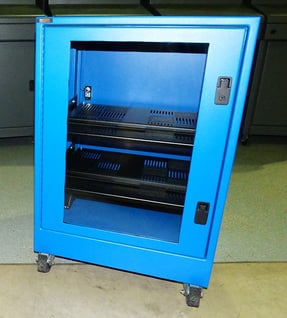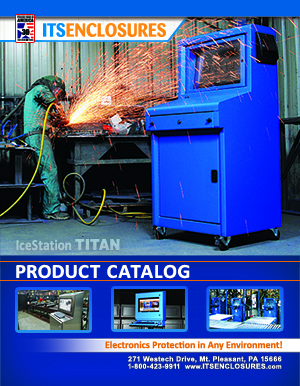3D printers have been around for some time (as early as 1980), “but it wasn’t until January 2009 that the first commercially available 3D printer… was offered for sale. This was the BfB RapMan 3D printer… Since 2009, a host of similar deposition printers have emerged with marginal unique selling points (USPs) and they continue to do so,” as described in the article, ‘History of 3D Printing: The Free Beginner’s Guide.’
As 3D printers evolve, more and more manufacturers are using them to fabricate prototypes and parts. PC Magazine, lists the various items that can be produced with a 3D printer, “Designers use 3D printers to quickly create product models and prototypes, but they're increasingly being used to make final products as well. Among the items made with 3D printers are shoe designs, furniture, wax castings for making jewelry, tools, tripods, gift and novelty items, and toys.” In fact, the medical community is even experimenting with printing out tissues and organs for transplants! According to The Washington Post article, ‘3 Ways in Which a 3D Printer May One Day Save Your Life,’ the technology is advancing quickly, “Much like familiar desktop inkjet printers, specialized 3D printers can be used to jet living cells, along with support material, called scaffolding. Such “bioprinters” are being used for printing skin, bones, and joints. Recently, a surgeon used the technology to create a new pelvis for a man, while soldiers could have their bones scanned prior to going into combat so that 3D replicas could be created in case they are injured.”
Furthermore, Alcoa, in Pennsylvania, is expanding its operations, at the tune of $60 million, to increase 3D printer capabilities, “Lightweight metals leader Alcoa (NYSE:AA) is expanding its R&D center in Pennsylvania to accelerate the development of advanced 3D-printing materials and processes. Alcoa will produce materials designed specifically for a range of additive technologies to meet increasing demand for complex, high-performance 3D-printed parts for aerospace and other high-growth markets such as automotive, medical and building and construction.” 3D printing shows no signs of slowing down!
 Depending on the complexity of a product, prototypes are generated 1 to 3 times (on average) before determining a final design. By using 3D printers, the cost to produce prototypes is greatly reduced, when compared to traditional CNC machining or outsourcing the production of parts. The lead time for a prototype is also reduced, because a company can produce prototypes at their own facility without the assistance of outsourcing.
Depending on the complexity of a product, prototypes are generated 1 to 3 times (on average) before determining a final design. By using 3D printers, the cost to produce prototypes is greatly reduced, when compared to traditional CNC machining or outsourcing the production of parts. The lead time for a prototype is also reduced, because a company can produce prototypes at their own facility without the assistance of outsourcing.
There are many variations of 3D printers available on the market. Print quality and materials used to create a prototype will dictate the overall investment required to purchase the desired 3D printer. Professional 3D printers can cost an upwards of $25,000 or more. Mid-level printers range from $5,000 – $25,000 and entry-level desktop units are generally under $5,000. The preferred print material will also be one of the driving costs of a 3D printer. Materials such as plastic, steel and nylon are all available in varying 3D printers.
Many critics of 3D printers will point out that the units are quite loud during printing, generate a good amount of heat, and omit bothersome, harmful fumes. In addition, 3D printers were not necessarily designed to withstand the rigors of a manufacturing environment. Dust, dirt, water and grease can all be harmful to the overall life of the printer.
All of the above mentioned items should be considered before the printer is deployed in a plant environment. The best solution is to choose an industrial 3D printer enclosure that will protect the electronics from harmful environmental conditions. 3D printer enclosures will also help minimize the loud, distracting sounds during the often lengthy printing process and help solve some of the issue with fumes.
3D printer enclosures are available with many thermal management/climate control options such as filtered fan systems, air conditioners, and even heaters. The TweakTown blog, ‘3D Printing Tips and Tricks: Keeping Your Electronics Cool,’ explains the importance of thermal management, “The electronics that control a 3D printer are not that much different than those that are inside a modern PC, and as such, keeping those components cool is paramount to keeping the 3D printer running efficiently.”
The future for 3D printers is very bright! An enclosure expert can help configure the solution that best meets the needs based on the printer and environment it will be installed.
More information: 3 REASONS TO USE INDUSTRIAL ENCLOSURES WITH DESKTOP 3D PRINTERS
HAVE QUESTIONS? LET US KNOW HOW WE CAN BEST ASSIST YOU! CONTACT AN 'ITSENCLOSURES EXPERT' AT 1-800-423-9911 -OR- SEND US AN EMAIL: INFO@ITSENCLOSURES.COM



